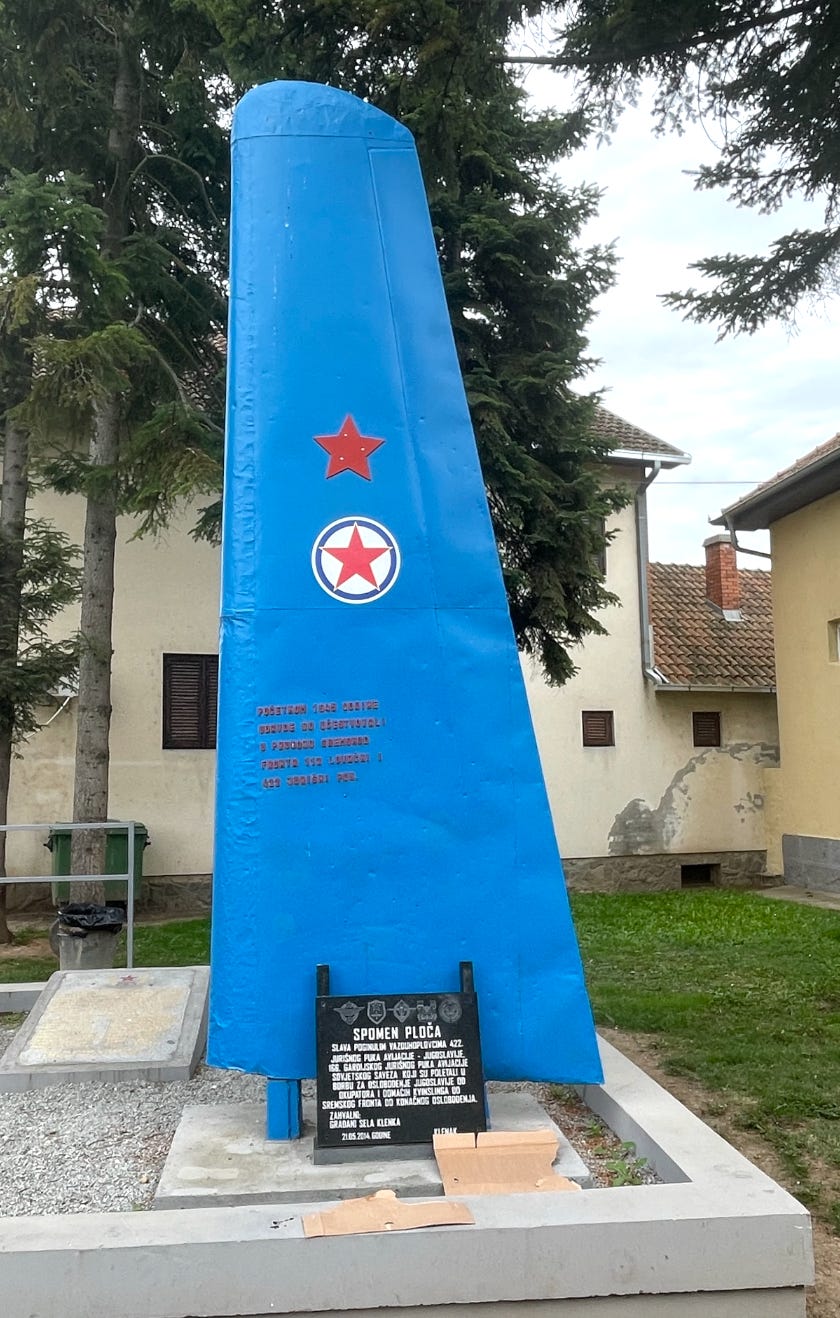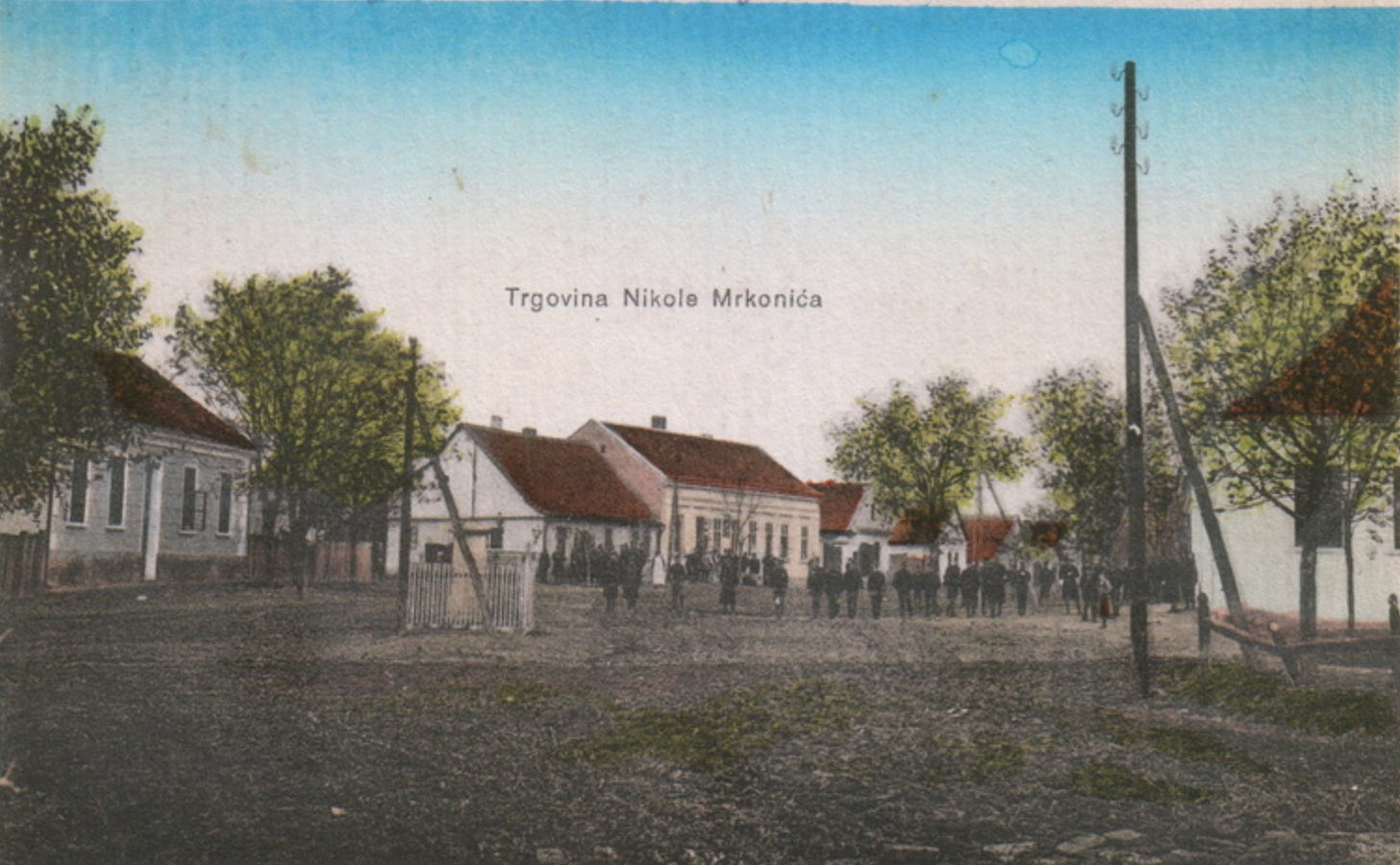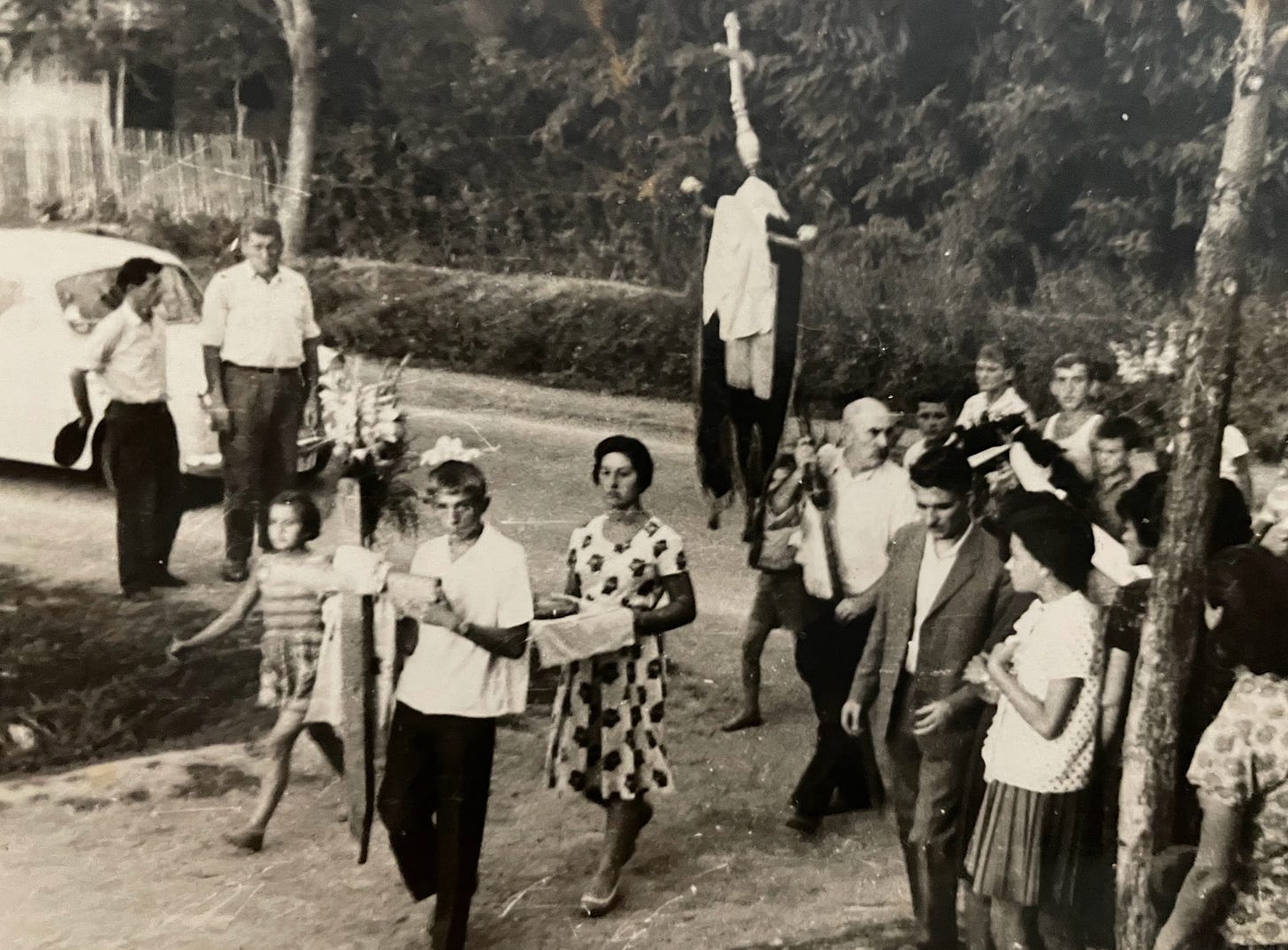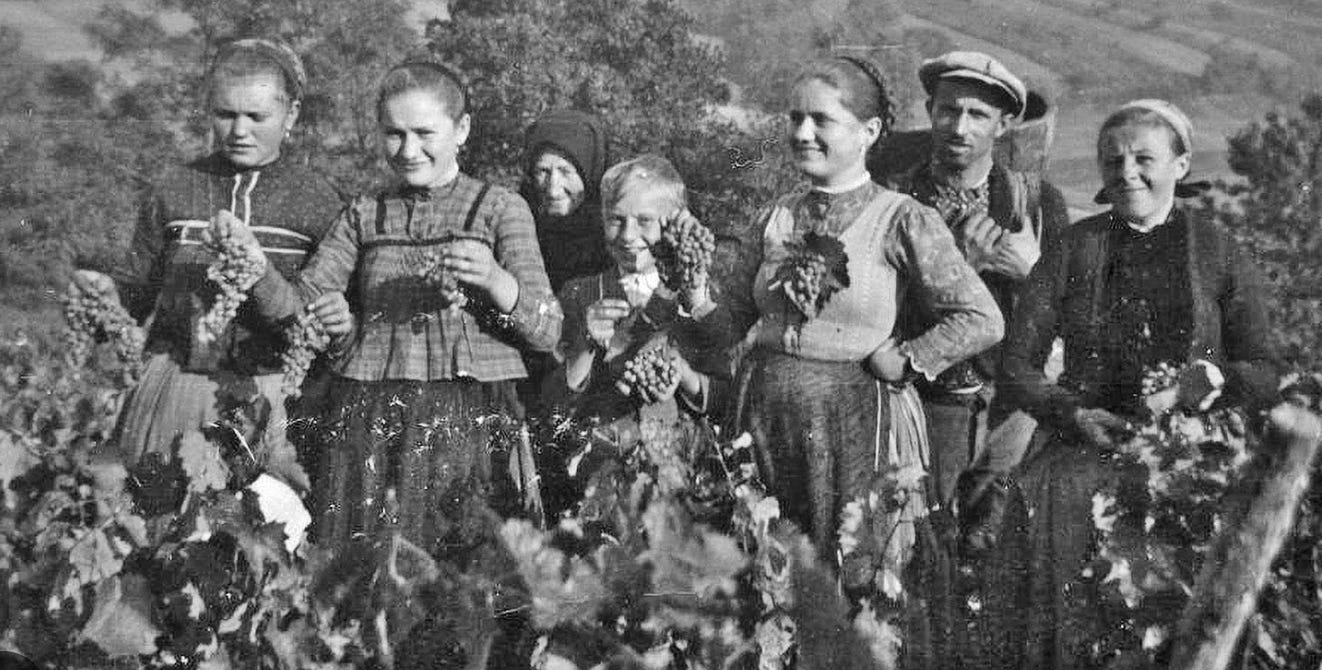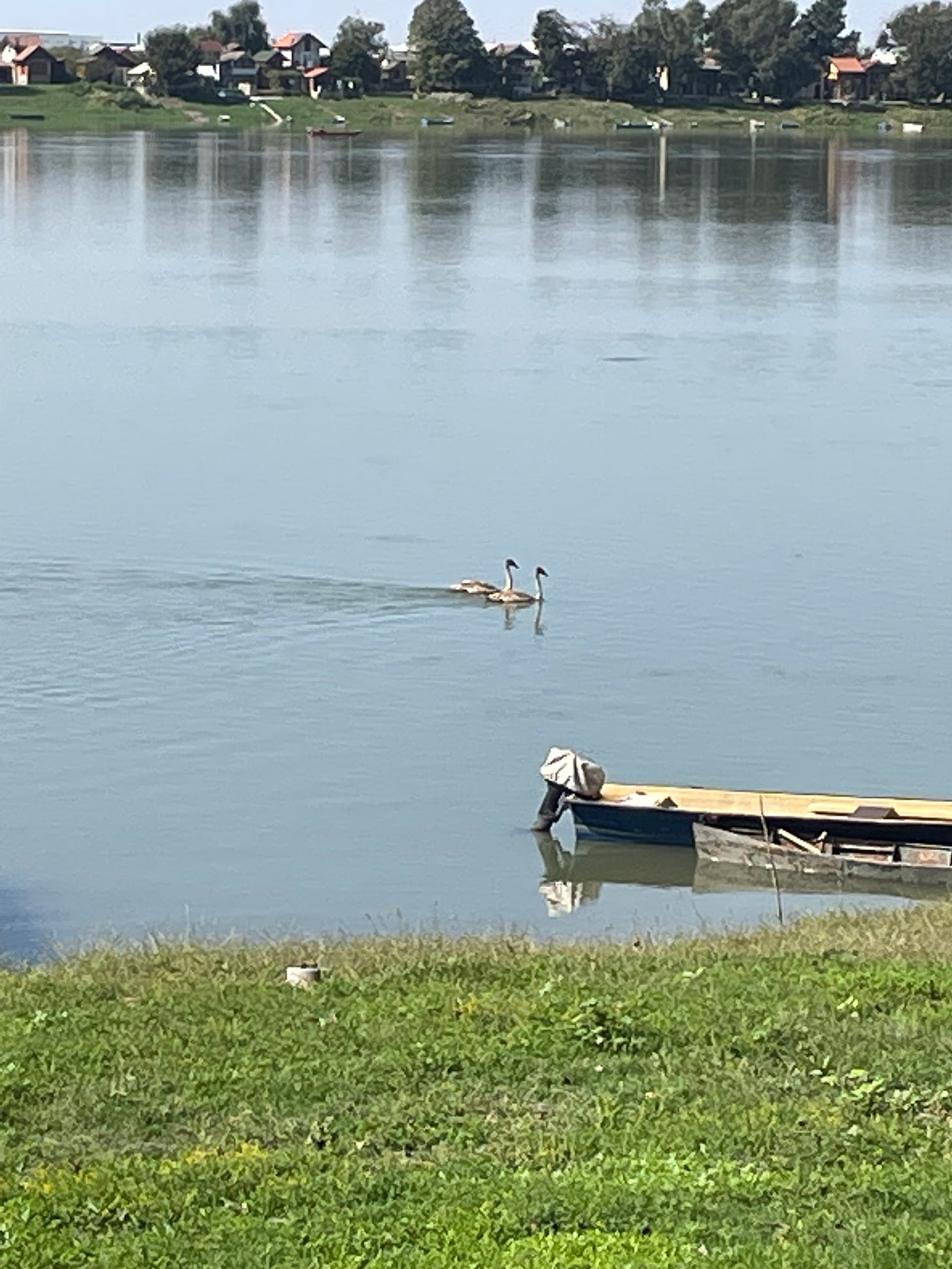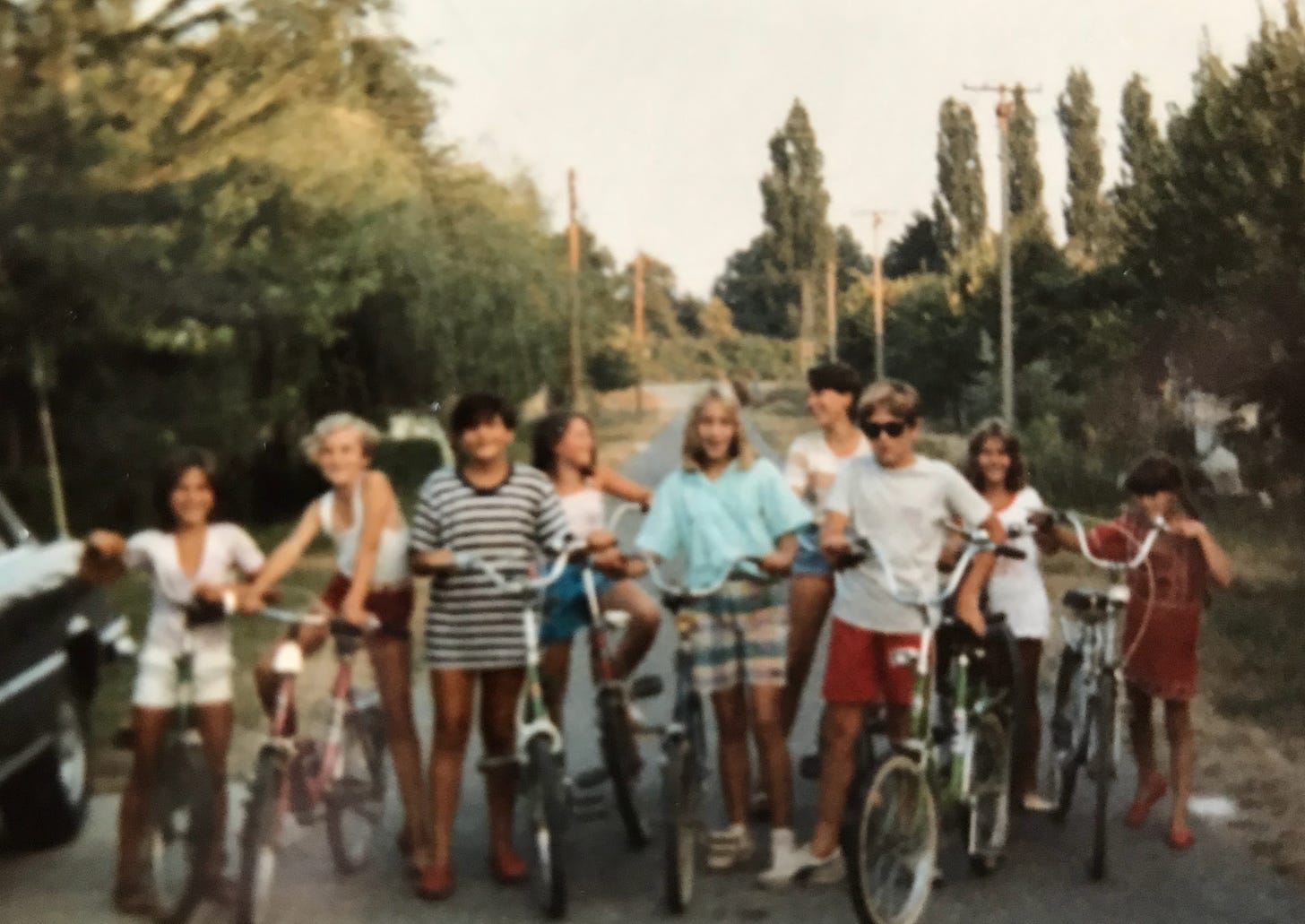San Pedro, California may always be my hometown (Go Pirates!), but our new place of residence is a village called Klenak. The name of this town comes either from the Serbian word for the chub fish (‘klen”) or from a tree (from the maple family) by the same name. Both possibilities are fitting, since those trees and that fish are abundant locally!
Undated photo of Klenak showing a Catholic Church (demolished in the 1970s) in the foreground plus the Orthodox Church in the background (courtesy of Sasha’s cousin, Mita)
Klenak has been home to Sasha’s paternal family since the 18th or 19th century, when they were forced to migrate north due to the violence and political repression under Ottoman rule. Pushed from southern Serbia and Montenegro, they moved up into the province known as Vojvodina. Vojvodina is made up of Srem (where we live), Backa (to the north of us), and Banat (northeast of us…there is Serbian Banat and Romanian Banat). Neighboring Slavonia in Croatia is also a part of this historical region. More on all this geography to come!
Memorial honoring the liberation of the town from Nazi occupation in 1945. Sasha’s grandfather fought on the Sremski Front, was taken prisoner, escaped, and returned to battle.
Sasha’s aunt, Tetka Mira, relaxing in the family’s lush garden (early 1950s)
Klenak is a ten minute drive across a bridge from Sabac, a city with a population of about a hundred thousand people. Klenak and Sabac are physically close, but culturally separate thanks to historical circumstances. The Sava River runs between Klenak and Sabac, and for centuries, this river marked the division between two major empires, the Ottomans to the south and the Hapsburgs to the north. This meant that residents of Klenak were subjects of Hungary and Austria, even though they shared language, confession, and identity with those across the river in Ottoman-controlled Serbia.
Klenak c. 1914 (trgovina translates as “trade” or “merchant,” so this was likely a local business)
A prazdnik, or Orthodox Christian celebration procession sometime the late 1950s/early 1960s
These tranquil meadows and forests were a militarized frontier zone from the 17th through 19th centuries, set up to guard this strip of land connecting Central Europe to the Balkan Peninsula.
Armed settlements of Serbs, Croats, Romanians, and Hungarians were promoted by the Hapsburgs to buffer northbound Ottoman incursions. German settlers, colloquially known as Danube Swabians, were also recruited to settle the frontier plains, incentivized by religious freedom, land grants and favorable taxation. In short, borders frequently and politics kept people in flux!
Danube Swabians in traditional costume, courtesy of the
Fast forward to the 20th century: two world wars brought a lot of destruction, the exodus of many Germans, plus the movement of Serbs from Bosnia and Croatia to the district of Srem. Hungarians are still a strong demographic presence in the towns north of Klenak, and the region has a sizable population of Romani residents. Slovaks, Czechs, Bunjevci, Romanians and Rusyns still call this region home. During the Socialist Republic of Yugoslavia, the town’s railroads and proximity to Zorka, Sabac’s manufacturing conglomerate, helped sustain the community. Now, infrastructure is being revamped and new residents are renovating older homes and building new ones, making space for growing families in a country working to bolster its demography. Vojvodina remains a bastion of cultural fusion in Central Europe, and this diverse heritage is experienced daily in architecture, food, music, language, and folk customs.
Swans on the Sava with the residential end of Sabac in the background
Today’s Klenak has about three thousand residents, two restaurants, several small grocery stores and bakeries, a railway stop, a public school, a post office, and a local football club, FK Borac Klenak. For me, it’s a new community, but for Sasha, it is the familiar place where he spent summers playing football, fishing, and riding Yugoslavia’s signature bicycle, the Rog Pony.
Sasha and the neighborhood kid crew armed with Pony bikes and ‘80s spirit (Sasha claims these girls were trying to chase him into the river…that may or may not be true!)
Young Klencani, old transport: two local guys ride a carriage on our street





